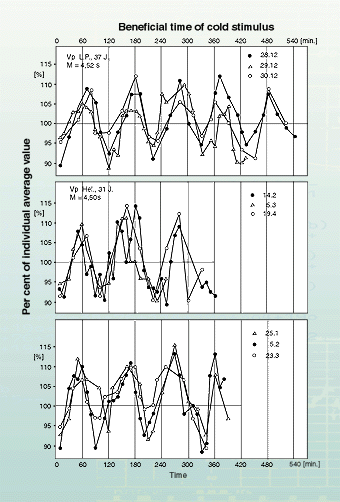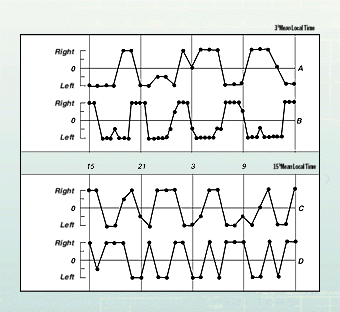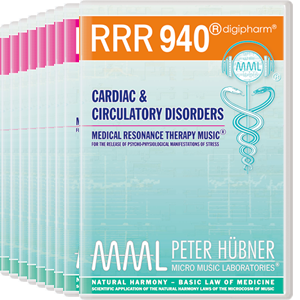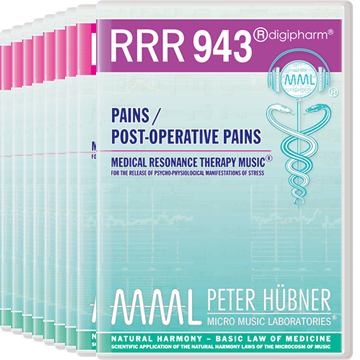| digipharm® |
| Home • Site Map • Research • Reports • International Experts • Music Preparations • Fundamentals • News • Questions • Shop |
| digipharm® |

Prof. Dr. med. Gunther Hildebrandt • Chronobiological Aspects of Music Physiology
Some of the rhythmic procedures in the organism can be directly experienced by us, and can even be more or less voluntarily influenced, such as the heart and breathing rhythm. Others, such as the 90 -120 minute basal activity rhythm (illustration 2) or the side rhythm of blood distribution which shows most clearly in the side change of nose breathing with a periodic duration of 6-8 hours (illustration 3), are hardly noticed by us, and must be shown by appropriate measured values.

Illustration 2
Plot of sensitivity to pain of a front tooth determined by cold stimulus application (so-called beneficial time of cold stimulus) of 3 test subjects on 3 different days. Determination of the wave of pain occurred in intervals of 15-30 minutes. The values are shown in per cent of the individual daily means. The rhythm of the sensitivity to pain is the same as the one which forms the sleep cycles during a night’s sleep.
(According to POLLMANN and HILDEBRANDT 1982)

Illustration 3
Semi-quantitative presentation of the rhythm of the sides of the nose of 4 people in the course of 24 hours. The full swing of the curves shows that approx. 80% of the total respiratory air is inhaled, due to the nasal mucous membrane going down on one side, through only one side of the nose.
MOZ = mean local time.
(Own studies)
| MEDICAL RESONANCE THERAPY MUSIC® Medical Music Preparations on CD |
| Listening Program:
Cardiac & Circulatory Disorders  Listening Program: Pains / Postoperative Pains 
|
|
If you like to look at the complete program, |
With kind permission of AAR EDITION INTERNATIONAL
© 1998- DIGIPHARM >
© 1998- DIGIPHARM >